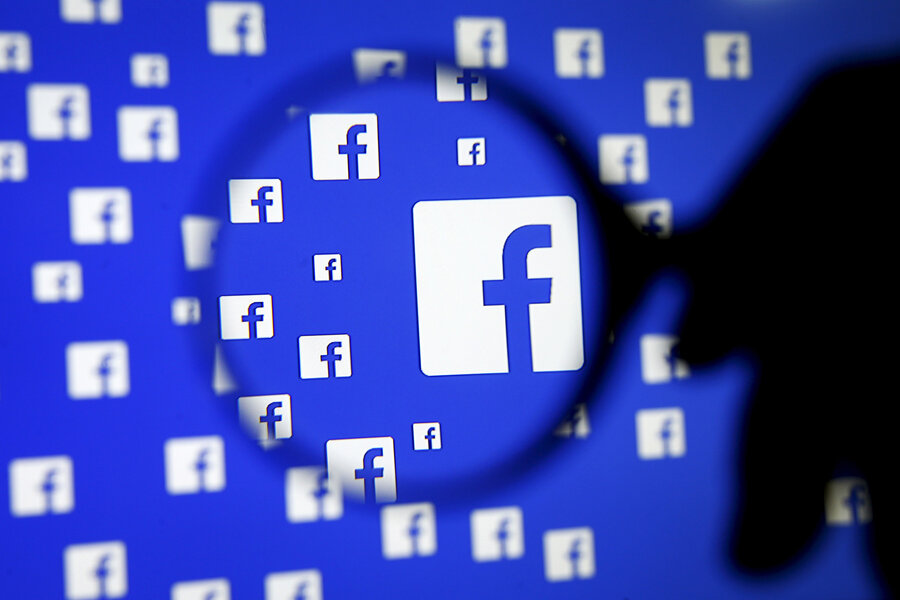Facebook enables live-streaming video. Should Twitter and Youtube beware?
Loading...
You no longer have to be a celebrity to broadcast live content from your iPhone via Facebook. But that doesn’t mean people will be lining up to watch you livestream your morning breakfast ritual with your cat – or will they?
While Facebook is late to the livestreaming party – YouTube, Twitter's Periscope, and Meerkat have offered livestreaming for months or years – its presence reinforces the arrival of live video.
All an user has to do is open their Facebook app and tap on “post” as one would to make a routine status update. Now, in addition to options to post a photo or video, there is now a livestream icon to tap.
After tapping the icon, the user is given the option of typing in a description of what is about to be streamed. Then simply tap “Go Live” to begin the livestream. Afterwards, there is an option to save the video to the camera’s memory.
To build an audience, users simply hashtag in the names of people they want to invite to watch the stream, which is immediately available to all friends and remains on the page as a regular post afterwards which can be forwarded and tagged.
Beware, those who do not turn of their phone’s notifications and ringer are likely to have their live feed interrupted. In that case, the screen shows a ‘paused’ message and gives an option to restart when the notification has been dismissed or resolved by the user.
“Facebook is the largest social network and mobile livestreaming is not even a year old, so Facebook has for sure not missed the right moment to join the party,” Alex Khan, Periscope consultant writes in an email response.
Video is already a major component of social networking and livestreaming is just its newest iteration.
“Users on Facebook consume 100 million hours of video every single day,” says Dan Rayburn, streaming media technology, content, and business model analyst in an interview. “That’s just crazy. End of last year, people were consuming five billion hours of video a day on Facebook. That’s just staggering.”
While Mr. Rayburn says it’s too early to know the impact yet, he says, “it’s nice that they’re expanding that ability to more people, but the average person really isn’t who they need to be livestreaming in order to make an impact in the market.”
Celebrity content generators are the real goal, he says.
Mr. adds, “If the largest social network, Facebook, jumps on an idea, it is, first of all, a great idea. Facebook proves that Twitter is on the right track with Periscope.”
“In my opinion, Facebook live has a different use case than [Twitter's] Periscope,” Khan writes. “Periscope is more about seeing the world through the eyes of someone else. It's more about discovery, while Facebook live is primarily about staying in touch with your friends and family.”
But it will be difficult for either social network to dethrone the king of online video, Google's Youtube.
“YouTube owns one very relevant metric, and this is watching time,” he says. “Linking videos across platforms is another benefit as it maximizes the visibility of your videos but it is too early to tell who will be the big winner. As for most new services it will be the one which people, know, like, and trust the most.”
In August 2014 the live stream site Twitch, the social platform for many users ages 15 to 35 known primarily for its video gaming broadcasts, was home to the phenomenon of over 20,000 people at a time watching a beta fish in a tank “play” Pokemon. Depending on where the fish name Grayson swam, an overlay on the screen stood in for game actions.
Also, over the course of six days in February of 2014, more than 14 million viewers watched a maddeningly unproductive and at times stagnant video game played live online by more than 120,000 players, called "TwitchPlaysPokemon."
Twitch representative Chase (who uses no last name) says in an interview, “One thing we’ve learned through Twitch is it’s the quality of the broadcaster that’s key to success.”
“Engaging with your audience goes a long way,” says Chase. “We currently have one gentleman Piano Man Bernie Katzman, who’s a 71-year-old man with over 64,000 viewers just a few days ago. He’s a kind of viral sensation right now. If you look at his production, it’s just a camera in a room with two pianos. So this idea that you have to have some professional setup to become a sensation is far from accurate. You just have to be engaging.”








